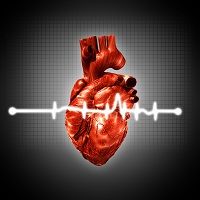Article
Effect of Testosterone and Estradiol on Cardiovascular Disease Risk in Men
Author(s):
Study results presented at ENDO 2015 suggest that some risk factors associated with cardiovascular disease are regulated by testosterone and estradiol, others (such as changes in LDL cholesterol and blood pressure) are not.

Men have a higher prevalence of cardiovascular disease (CVD) compared to premenopausal women, suggesting that testosterone may increase the risk of and/or that estradiol may protect against CVD. Studies that have examined the roles played by androgens and estrogens in known CVD risk factors and other metabolic factors have produced highly variable results.
At Endo 2015, Elaine Wei-Yin Yu, MD, MSc, assistant professor of medicine at Massachusetts General Hospital in Boston, MA, presented results from a study that examined the effects of testosterone and estradiol on cholesterol, leptin, and fasting glucose levels, among other markers of CVD risk in a cohort of men treated with testosterone replacement therapy.
Yu and her colleagues at Massachusetts General Hospital recruited two cohorts of healthy men aged 20-50 years. All men received the gonadotropin releasing hormone superagonist (GnRH agonist) goserelin acetate (3.6 mg q4wk) to suppress endogenous testosterone and estradiol. Men in Cohort 1 (n=198) were randomized to receive a placebo gel or 1.25 g, 2.5 g, 5 g, or 10 g of testosterone gel daily for 16 weeks. Men in Cohort 2 (n=202) received the same regimen plus 1 mg/d of the aromatase inhibitor anastrozole to block the conversion of testosterone to estradiol. Yu mentioned that aromatase activity accounts for 80% of endogenous estrogen production in men.
The researchers measured fasting serum leptin, lipids, glucose and HOMA-IR (homeostatic model assessment and insulin resistance) every 4 weeks. They measured intramuscular fat (at the thigh) at baseline and 16 weeks. Changes were assessed between testosterone dose groups within Cohort 2 to assess testosterone effects, and between Cohorts 1 and 2 to assess estradiol effects.
Yu said the dosing regimen was designed to achieve mean serum testosterone levels ranging from prepubertal to high-normal and were similar in both cohorts. Mean testosterone levels were, respectively, 44, 191, 337, 470, and 805 ng/dL in Cohort 1 vs. 41, 231, 367, 485, and 924 ng/dL in Cohort 2 at testosterone doses of 0, 1.25, 2.5, 5, and 10 gm of testosterone/day; p=NS at each dose level.
Mean serum estradiol levels increased progressively with testosterone dose escalation in Cohort 1 (3.6, 7.9, 11.9, 18.2, and 33.3 pg/mL) but remained <3 pg/mL in all dose groups in Cohort 2 (P<0.001 between cohorts).
Both serum HDL and leptin levels showed a marked inverse association with testosterone dose in both cohorts (p<0.001 for all). This relationship was not altered by suppressing estrogen production, indicating that testosterone alone regulates these measures.
In contrast, fasting glucose, HOMA-IR, and intramuscular fat increased similarly in all men in Cohort 2, regardless of testosterone dose group, and were significantly higher than in Cohort 1 (P<0.05 for all groups), indicating that estradiol primarily regulates these measures. Changes in blood pressure, LDL, and body weight were not significantly associated with either testosterone or estradiol levels.
Based on these observations, Yu and her colleagues concluded that although worsening of insulin resistance and accumulation of body fat due to low estrogen levels are consistent with the higher rates of CVD seen in men, other risk factors such as changes in LDL and blood pressure do not appear to be regulated by gonadal steroids. In the abstract summarizing their findings, the researchers wrote, “Even though leptin is made by adipocytes, its circulating level is regulated exclusively by androgens in men. These findings may contribute to a better understanding of the roles of androgens and estrogens in gender differences in CVD.”
On this last point, a member of the audience commented that there was no group of patients treated with estradiol alone to investigate this further. Yu confirmed that there was no estrogen-treated cohort in the study.




